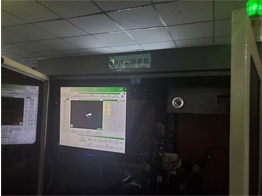
For electronic equipment, a certain amount of heat is generated during work, which causes the internal temperature of the equipment to rise rapidly. If the heat is not released in time, the equipment will continue to heat up and the device will fail due to overheating. Performance will degrade. Therefore, it is very important to perform a good heat dissipation process on the circuit board. The heat dissipation of PCB Bare Board is a very important link.
So what is the heat dissipation technique of the PCB circuit board, and the following discussion with the PCB Prototype Service Supplier.
1. Heat dissipation through the PCB board itself:
Currently widely used PCB boards are copper-clad / epoxy glass cloth substrate or phenolic resin glass cloth substrate, and there are a few paper-based copper-clad boards used. Although these substrates have excellent electrical properties and processing properties, they have poor heat dissipation properties. As a heat dissipation method for highly heat-generating components, it is almost impossible to rely on the PCB resin to conduct heat, but to dissipate heat from the surface of the components to the surrounding air. However, as electronic products have entered the era of component miniaturization, high-density installation, and high-heat assembly, it is not enough to dissipate heat only on the surface of components with a very small surface area. At the same time, due to the large use of surface mount components such as QFP and BGA, the heat generated by the components is transferred to the PCB board. Therefore, a better way to solve the heat dissipation is to improve the heat dissipation capability of the PCB itself that is in direct contact with the heating element. Conducted or emitted.
2. Heat dissipation through layout:
a. The heat sensitive device is placed in the cold wind area.
b. The temperature detection device is placed in a relatively hot location.
c. The devices on the same printed board should be arranged as much as possible according to the amount of heat generated and the degree of heat dissipation. Devices with low heat generation or poor heat resistance should be placed. The cooling airflow is quite upstream. Devices with high heat generation or good heat resistance are placed quite downstream of the cooling airflow.
d. In the horizontal direction, high-power devices should be arranged as close to the edge of the printed board as possible to shorten the heat transfer path; in the vertical direction, high-power devices should be arranged as close to the top of the printed board as possible to reduce the temperature of these devices when they are working.
e. The heat dissipation of the printed board in the device mainly depends on the air flow, so the air flow path should be researched in the design, and the device or printed circuit board should be reasonably configured. When air flows, it tends to flow in a place with low resistance, so when configuring the device on the printed circuit board, avoid leaving a large airspace in a certain area. The configuration of multiple printed circuit boards in the whole machine should also pay attention to the same problem.
Our company also has Standard PCB on sale, welcome to consult.
Previous: 331K 400V china capacitor new safety capacitors capacitor types y1 safety capacitor For Sale
Next: Bluetooth Fingerprint Card Reader MR-210-BF Biometric Smart Card Reader
Copyright:@2020-2021
Comments Please sign in or sign up to post.
0
0 of 500 characters used